By Rob Staeger
Last month Drawn & Quarterly published the second installment in Mimi Pond’s fictionalized memoir, The Customer Is Always Wrong. A sequel to 2014’s Over Easy, The Customer is Always Wrong follows aspiring cartoonist Madge (based on the author) during her years waitressing at the Imperial Café, an Oakland eatery populated with a crew of misfits, artists, petty crooks, and drug users, brought together by a colorful and optimistic restaurant manager to somehow make it a haven and favorite neighborhood dining spot. Over Easy sees Madge hired as a waitress and becoming part of an impromptu work family. In Customer, the wheels start coming off the rolling carnival that is the Imperial, and Madge refocuses on her ultimate goal: getting enough money to move to New York and become a full-time artist.
Pond’s breezy art style—thin lines, shaped and textured by a blue watercolor wash—pulls the reader right along. Her characters are simply drawn but distinctive, and Pond is a wizard at conveying emotion with just a pinched mouth or a pair of heavy eyelids. The book opens in an episodic style, lingering on short stories about a bad boyfriend or a drugged-up shopping spree/car chase, before building to a crescendo in a late-night descent into dangerous nightclubs, as the characters search for a lost daughter, and the secrets that night reveals.
I interviewed Pond over email about her years at the Café, and how she told the story decades later. Here’s what she had to say.
With Over Easy being the first steps in a coming of age story, The Customer Is Always Wrong brings that to its conclusion and fulfills that promise. How is the Madge we see in Customer different from the Madge we were introduced to in Over Easy?
I think in The Customer is Always Wrong, it’s the slow dawning for Madge. She’s putting together some of the pieces of “What’s wrong with this picture?”.
One of the great things about the book is the tension between “What’s wrong with this picture?” and “What’s right with this picture?”, since there are a lot of admirable things about the work family at the Imperial, too. The problems seem baked-in, but do you think they’re inextricable? Can the good there exist without the bad?
As the years went by, things became much more businesslike at the restaurant. Successful business practices preclude a carnival environment, but I think to this day they still have a slightly off-kilter approach and a great tolerance for eccentricity in their employees.
You make the Imperial Café such a vibrant, living place. What goes into making a setting like that feel so lived in? (Other than, obviously, living in it.) What are the things about life, in that place and time, that you wanted to make sure you captured?
Everything about that time and place made me want to capture all of it. It was so vivid and rich, the sights, the scene, the smells, even the temperature. I felt like I was still living inside it every day I was working on the book. It was simply just so compelling; it had this energy. People there made a point of not just talking, but quipping. It behooved you to have a snappy answer to just about any question. It kept things interesting and fun. Everyone had an attitude of some kind.
Who are some of the characters there that you had the most fun writing and drawing?
I loved drawing all of them. Lazlo [poet, restaurant manager, and co-lead], of course, most of all, and for some reason, Bernardo [a gawky prep cook at the center of a love triangle], who had a mournful quality, and Martha [one of Madge’s fellow waitresses]. I could just see them so clearly.
It feels like there’s a shift of mood from the first book to the second. There’s such a sense of freewheeling fun in Over Easy. While The Customer is Always Wrong continues that to a certain extent, there’s also a sense that some of the bills are coming due. Was this a harder book to create than Over Easy?
Bear in mind, this is all just one story. I never conceived of it being anything else. It’s only two volumes because doing it as one was simply too daunting. I split it up the way I did because it seemed like the most natural break in the narrative. But The Customer is Always Wrong is definitely darker, and it was harder to go there, to those unpleasant memories, but that’s also what made the experience richer.
Even though you conceived it as one story, you published it in two books. Were there any decisions you made in Over Easy, either in character design or plot choices, that you wished hadn’t been set in stone by the time you got to Customer?
Not really. I worked for years on this as a conventional piece of fiction, so I felt like the story was fine. My only regret is leaving Doggie Diner out of the backgrounds of Oakland.
Other than Madge, the most central character is her friend and boss, Lazlo. In Customer, you dig deeper into Lazlo’s personal life outside of the restaurant family he’s assembled. In Over Easy, he’s so built up as an artistic restaurant impresario, and here some of that mythology falls away to reveal the man beneath, flaws and all. He’s obviously someone who is very dear to you; what was most important to you in how you told his story?
I wanted to capture his voice. He was a brilliant writer and a poet. I wanted to share with everyone just how delightful and expressive a person he really was. He was entirely lovable, but like many people we idolize in our youth, he had flaws and faults it took me years to see, but that just make him, to me, all the more fascinating and even more lovable. Mind you, this is fiction. This is not meant to be biography, so who you see on that page is not necessarily the actual real-life person, but an homage to one. I just wanted a metaphor for what it felt like for all of us.
Mama’s Royal Café [the inspiration for the Imperial] is still open in Oakland. Do you ever get back there?
I go back there all the time. I am still very close to many of the people with whom I worked back then. We have a real bond.
How have the people represented in your books (to the extent that the characters are drawn from real life) reacted to them?
I have not heard back from a lot of them yet. I realize that the story takes a dark turn maybe people weren’t expecting, so it may take them longer to process it for what it is.
And finally, once the book tour winds down, what’s up next for you?
I’m not quite sure. I have a number of short-form comics ideas in the works, We’ll see!
Over Easy and The Customer Is Always Wrong are on sale now. Mimi Pond will be appearing at Cartoon Crossroads Columbus Sept. 28 through Oct. 1, and the Miami Book Fair November 17 through 19. Below is a short sequence from The Customer is Always Wrong.


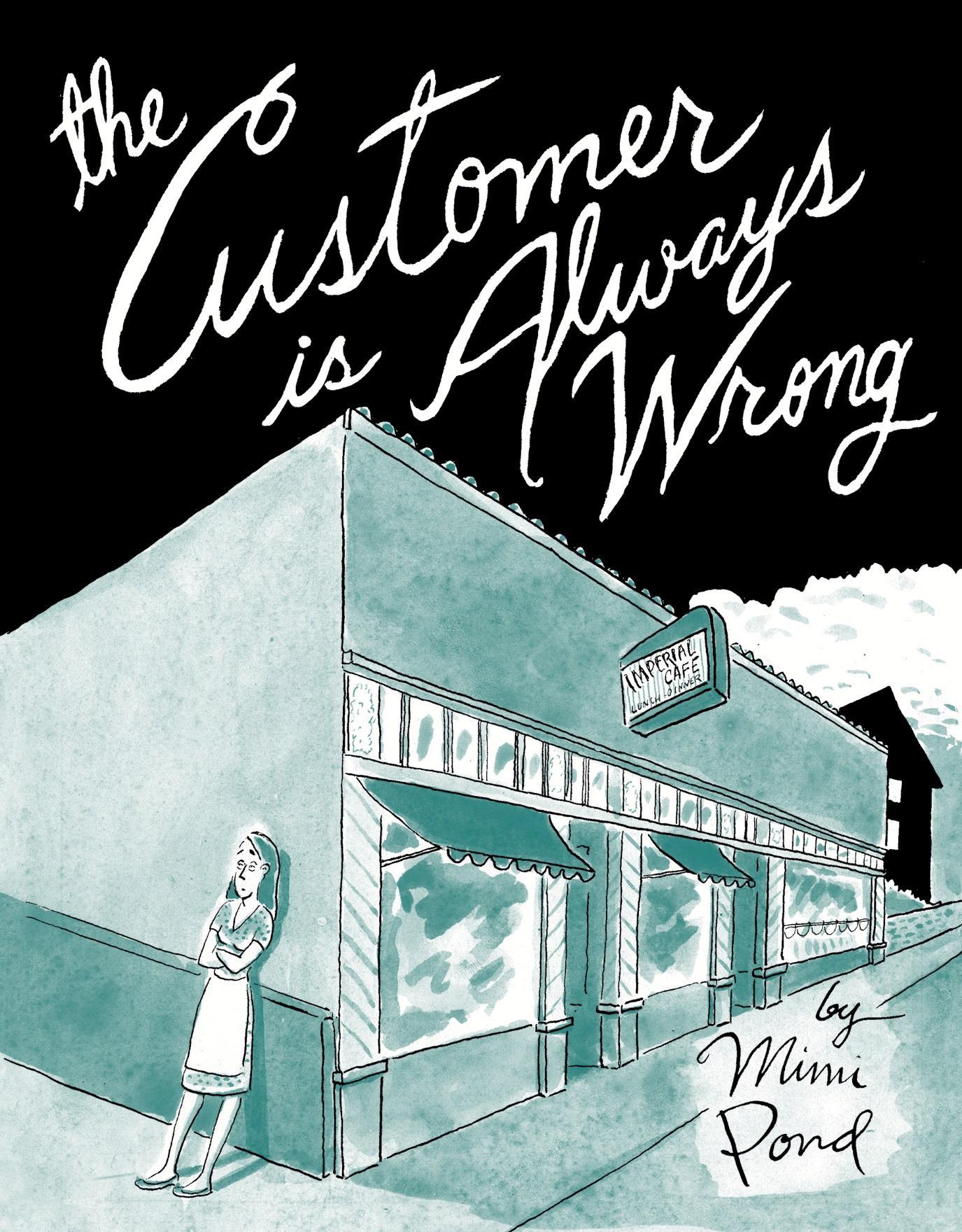
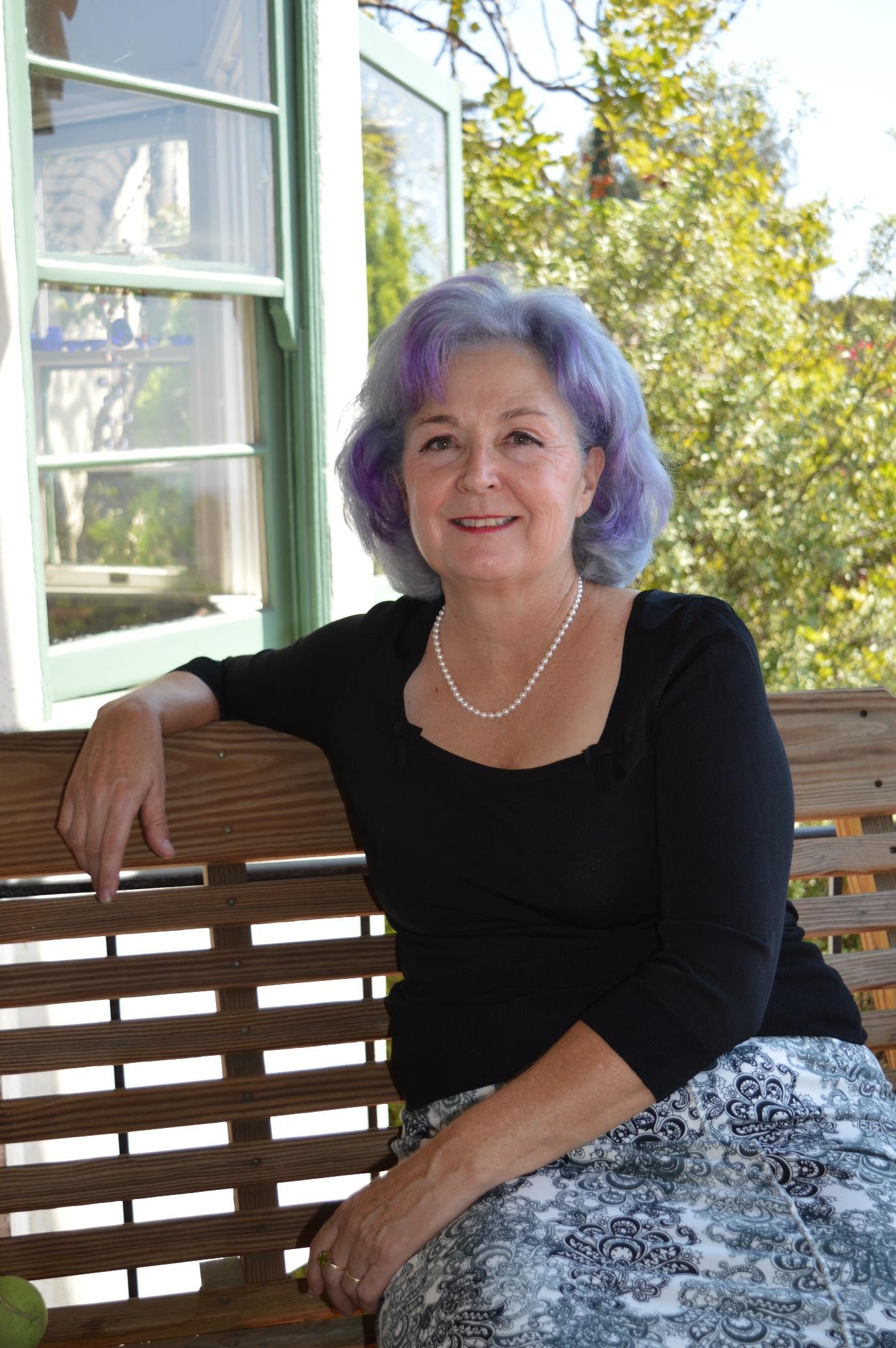
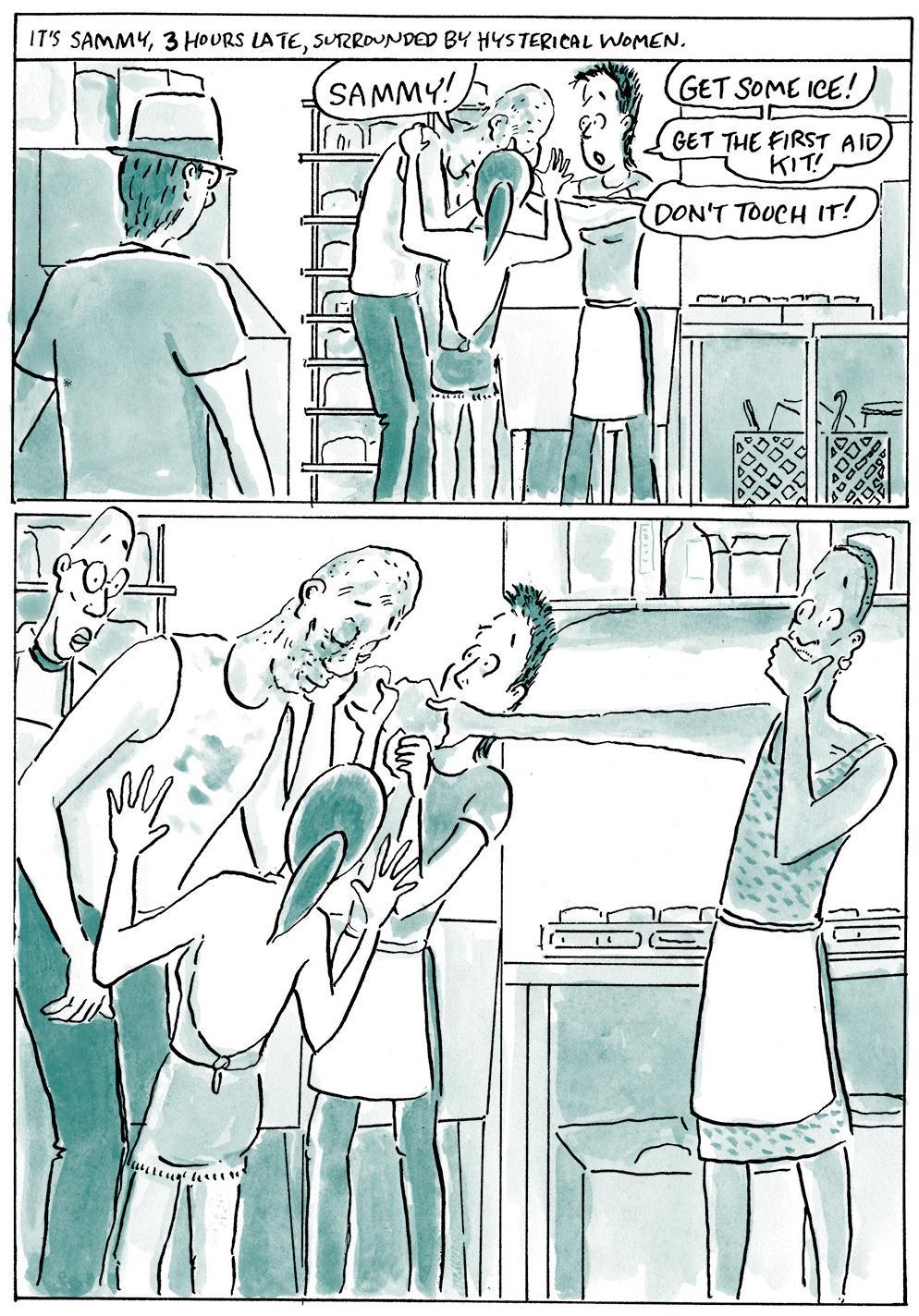
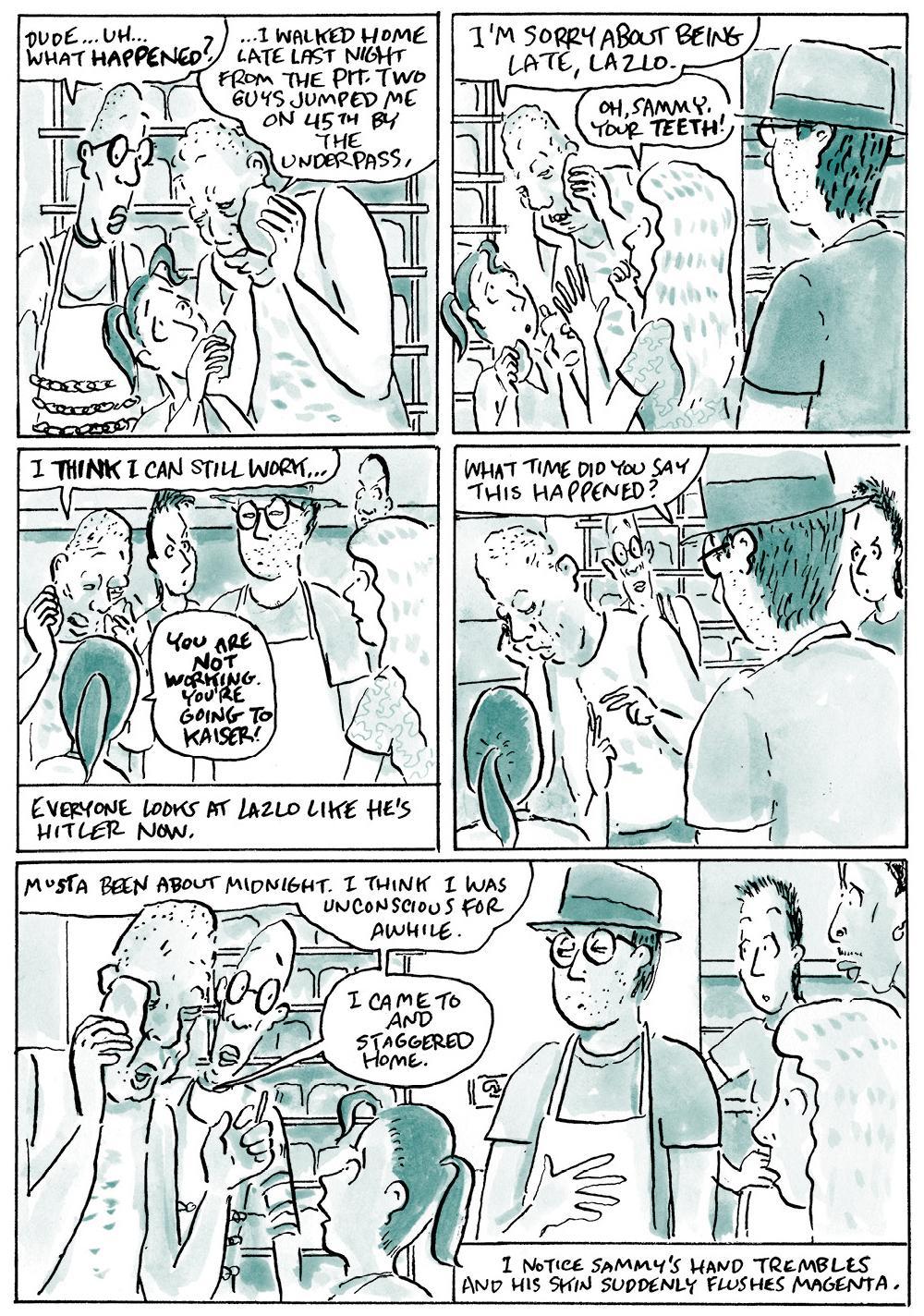
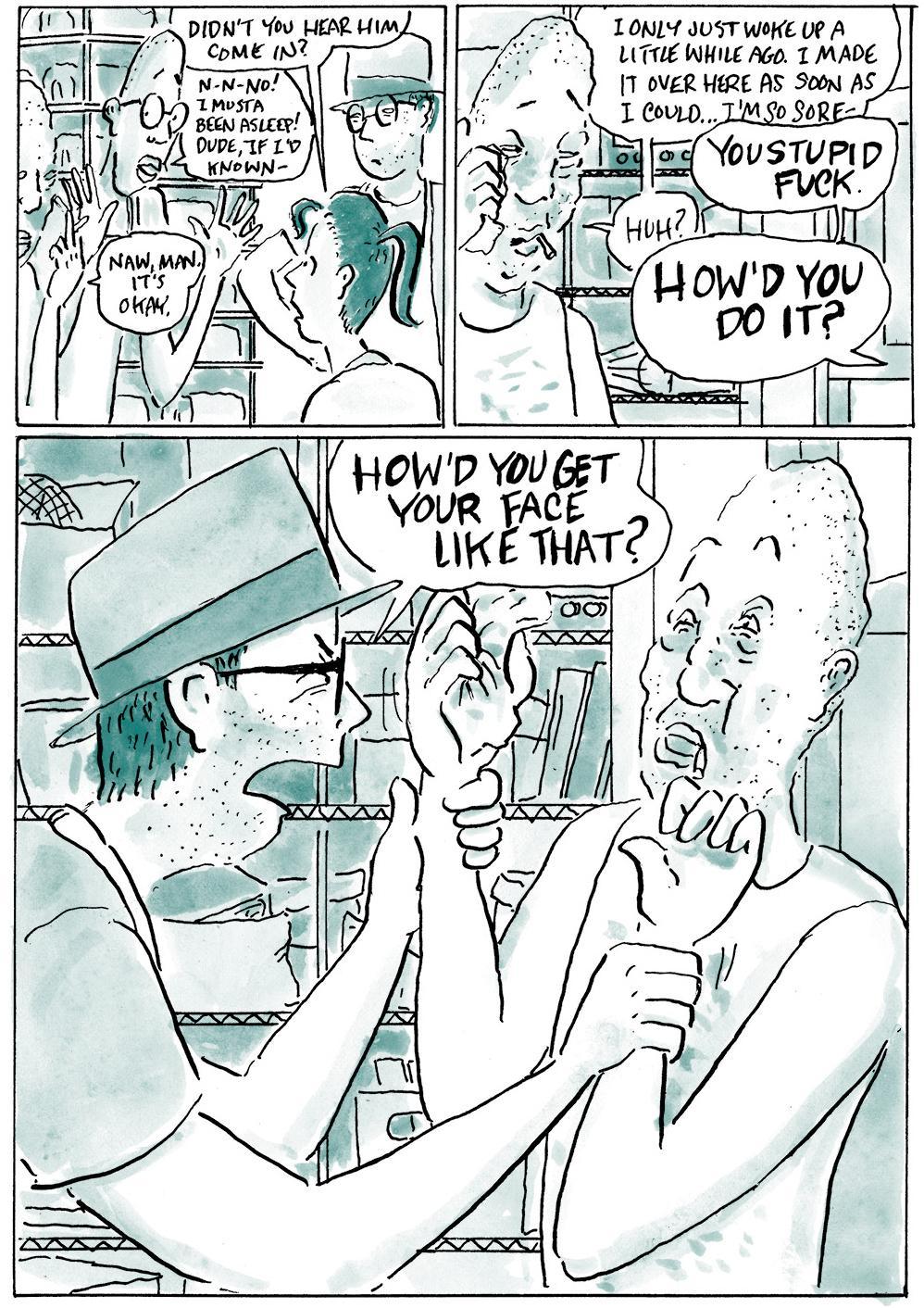
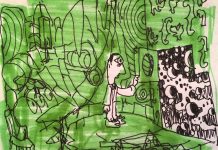
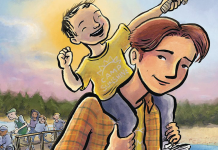
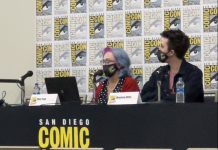



Comments are closed.